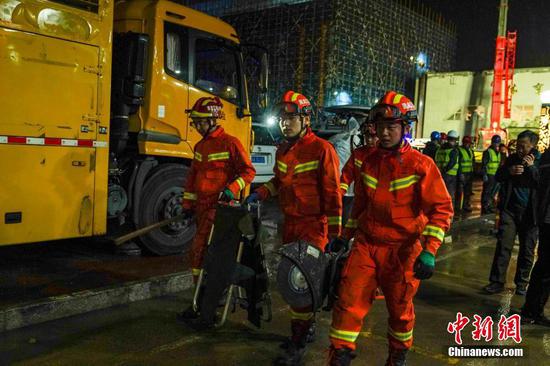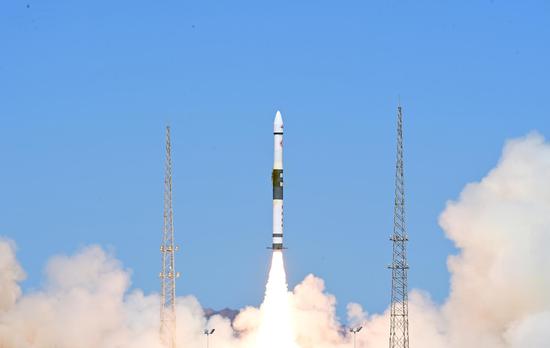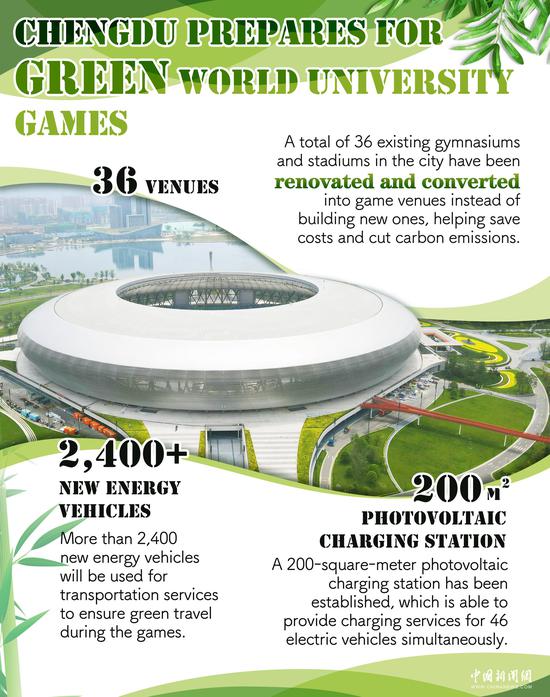
Technicians check a power transmission facility in Nantong, Jiangsu province. (SHI JUN/FOR CHINA DAILY)
Investment in nonfossil energy power generation rose 60.9 percent year-on-year during the first half, accounting for 88.6 percent of total power investment in the country, while the trend of green and low-carbon transformation in the power industry is expected to continue accelerating, according to a trade association.
Key surveyed enterprises completed investment of 331.9 billion yuan ($46.47 billion) in the power supply sector during the first six months, an increase of 53.8 percent year-on-year, with that in nonfossil energy power generation reaching 294 billion yuan, up 60.9 percent year-on-year, China Electricity Council, a national trade association of China's power enterprises and institutions, said during a news conference in Beijing on Tuesday.
Investment in solar power, nuclear power, wind power, thermal power and hydropower increased by 113.6 percent, 56.1 percent, 34.3 percent, 13.0 percent and 10.6 percent, respectively, year-on-year. Investment in power grid construction rose to 205.4 billion yuan, up 7.8 percent year-on-year, it said.
The council said that as China has been continuously pushing forward its green energy transition, with ambitious goals to peak carbon emissions by 2030 and achieve carbon neutrality by 2060, the country's newly installed power generation capacity is expected to exceed 300 million kilowatts for the first time in history this year, of which newly installed capacity of nonfossil energy power generation will exceed 230 million kW.
Installed power generation capacity is expected to reach 2.86 billion kW by the end of 2023, an increase of about 11.5 percent year-on-year. The installed power generation capacity of nonfossil energy is expected to rise to 1.51 billion kW by then, accounting for about 53 percent of total installed capacity, an increase of 3 percentage points year-on-year, it said.
The estimate is in line with forecasts by the National Energy Administration, saying that China will add 160 gigawatts of wind and solar capacity in 2023, a year-on-year growth of 33 percent, with a focus on deeper integration of solar and wind power to the grid.
The council emphasized the importance of sufficient power supply in the country in response to recent surging electricity demand caused by scorching temperatures in many parts of the country.
It is necessary to take orderly measures to ensure sufficient power during peak hours and extreme weather, with clean coal playing an important role in stable electricity supply in the country, it said.
The council suggested more efforts should be made in coordinating the planning of coal power plants, improving the long-term market mechanism for coal power, and vigorously promoting technological innovation and energy efficiency in the sector.
An analyst said China has been making all-out efforts to guarantee stable and adequate electricity supply across the country this year, amid a backdrop of resumption of work and production, which leads to demand recovery.
Luo Zuoxian, head of intelligence and research at the Sinopec Economics and Development Research Institute, said enabling sufficient power supply is a major task for the country.
While China has been developing wind, solar and hydropower on a large scale, clean coal remains strategically important to the country's energy mix and further ensures domestic power supply, Luo said.
The council predicted earlier that the highest power demand in China this year will be around 1.37 billion kW, an increase of around 80 million kW compared to 2022, or even 100 million kW higher in case of a prolonged period of widespread extreme weather.
The country's power use, a key barometer of economic activity, registered stable growth during the first half, driven by the overall recovery of the country's economy, with power consumption expected to increase by about 6 percent year-on-year to reach 9.15 trillion kilowatt-hours, said the council.
Overall electricity supply and demand are expected to remain balanced throughout the year, with possible localized strained power supply situations during certain periods, it said.


















































 京公网安备 11010202009201号
京公网安备 11010202009201号